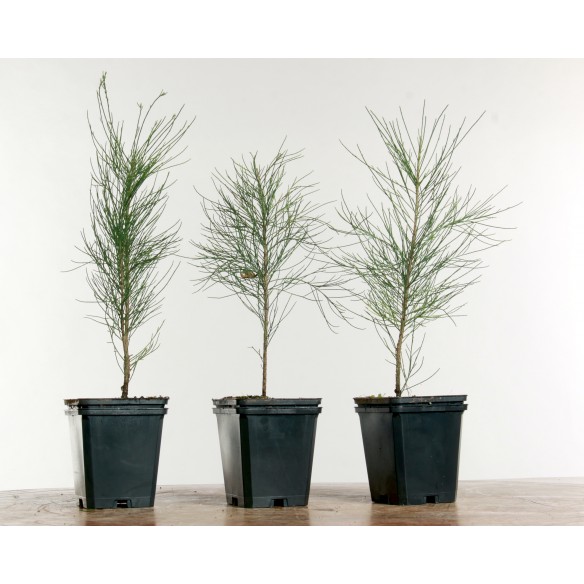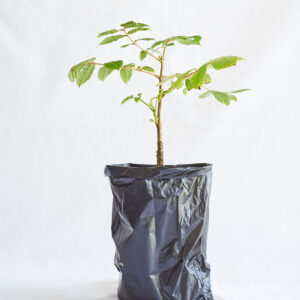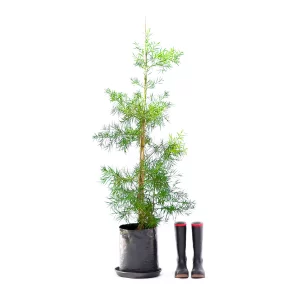Casuarina Equisetifolia
KSh 150.00
Casuarina equisetifolia, commonly known as coastal she-oak, horsetail she-oak, beach sheoak, beach casuarina or whistling tree, is a species of flowering plant in the family Casuarinaceae and is native to Australia, New Guinea, Southeast Asia and India. It is a small to medium-sized, monoecious tree with scaly or furrowed bark on older specimens, drooping branchlets, the leaves reduced to scales in whorls of 7 or 8, the fruit 10–24 mm (0.39–0.94 in) long containing winged seeds (samaras) 6–8 mm (0.24–0.31 in) long.
900 in stock
Description
The tree grows to a height of 6–12 m (20–39 ft), sometimes to 35 m (115 ft), and has a trunk up to 1 m (3 ft) in diameter. The bark is smooth and grayish on young specimens, becoming scaly or furrowed on older trees. The branchlets are drooping, up to 300 mm (12 in) long, the leaves reduced to scale-like teeth about 0.7 mm (0.028 in) long, arranged in whorls of 7 or 8 around the branchlets. The sections of branchlet between the leaf whorls (the “articles”) are 5–13 mm (0.20–0.51 in) long and 0.5–1.0 mm (0.020–0.039 in) wide.
The flowers are small and inconspicuous, borne in male and female catkins. The male catkins are terminal, up to 10 cm (3.9 in) long, and the female catkins are axillary, up to 5 cm (2.0 in) long. The fruit is a woody capsule, 10–24 mm (0.39–0.94 in) long, containing winged seeds.
Casuarina equisetifolia is a fast-growing tree that is tolerant of a wide range of soil conditions, including sand, clay, and limestone. It is also tolerant of salt spray and wind. The tree is used for a variety of purposes, including:
- Erosion control: Casuarina equisetifolia is a good choice for erosion control because it has a deep root system that helps to stabilize the soil.
- Windbreak: The tree is also a good windbreak because it has a dense canopy that blocks the wind.
- Timber: The wood of Casuarina equisetifolia is dense and hard, and it is used for a variety of purposes, including fuelwood, construction timber, and furniture.
- Ornamental: The tree is also grown as an ornamental tree because it has a graceful shape and attractive foliage.
However, Casuarina equisetifolia can also be an invasive species. It has been introduced to many parts of the world, where it has become naturalized and can displace native vegetation




Reviews
There are no reviews yet.